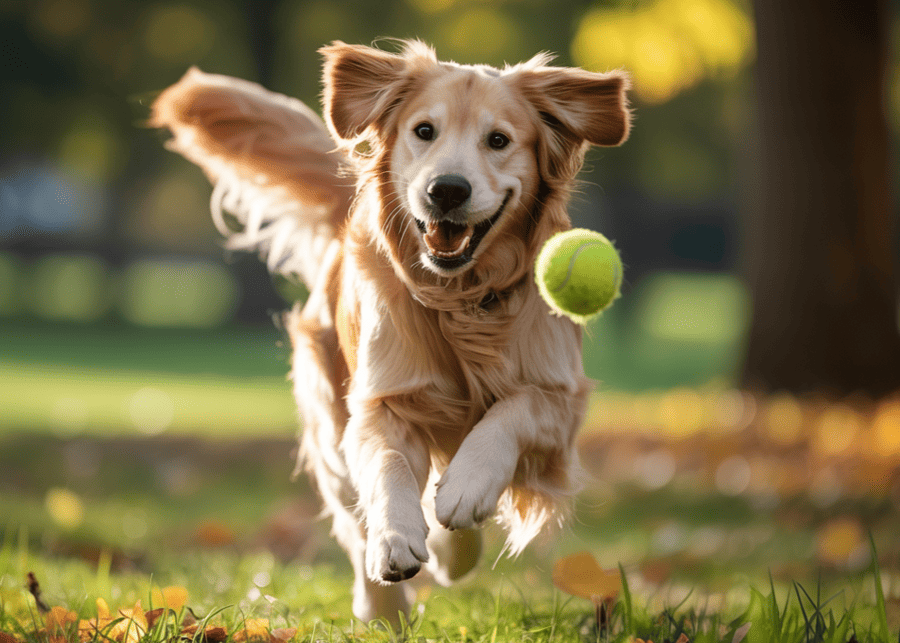You want the best for your dog, but a simple tennis ball could be a hidden danger. Understanding what makes a ball truly safe is the first step to worry-free playtime.
A safe dog tennis ball uses non-toxic, non-abrasive materials and durable construction to prevent breakage. Most importantly, it must be the correct size for the dog’s breed to eliminate any choking hazards and ensure safe play.
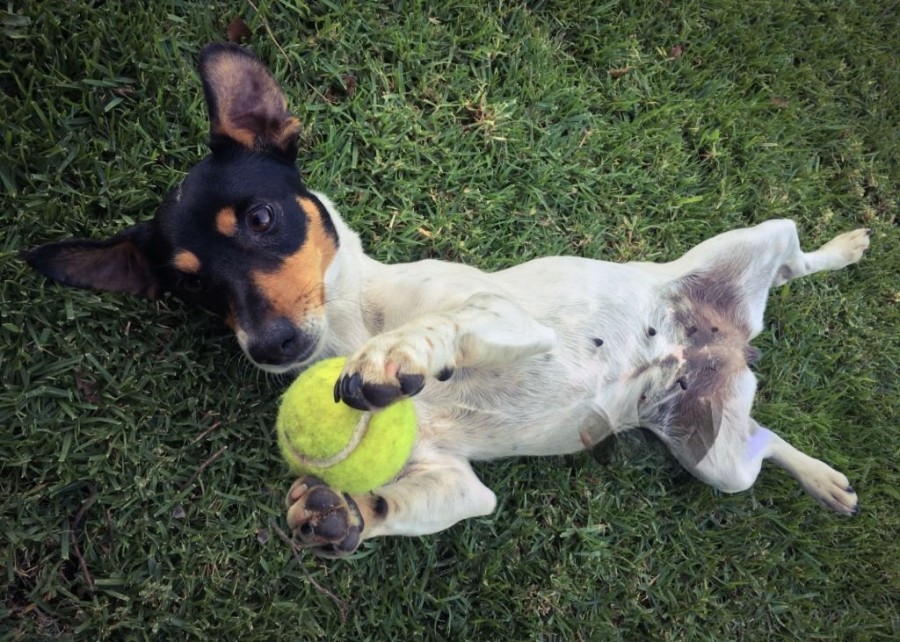
As a manufacturer with over a decade of experience, I’ve seen firsthand what separates a great dog toy from a dangerous one. We’ve spent years working with global brands like yours, developing internal standards that go beyond what you see on the shelf. The difference isn’t just in the final product; it’s in the materials we choose, the sizes we engineer, and the problems we solve before a product ever reaches a customer. It’s about turning safety from a feature into a brand’s foundation. Let’s break down what that really means.
Are Regular Tennis Balls Toxic for Dogs to Chew?
You see it everywhere: dogs happily chasing standard tennis balls. It seems so normal and harmless. But the truth is, these balls made for sport hide potential health risks for dogs.
Yes, regular tennis balls can be harmful. They are not designed for chewing. Their abrasive felt can wear down a dog’s teeth, and they may be made with dyes or rubber containing toxic chemicals not meant for consumption.
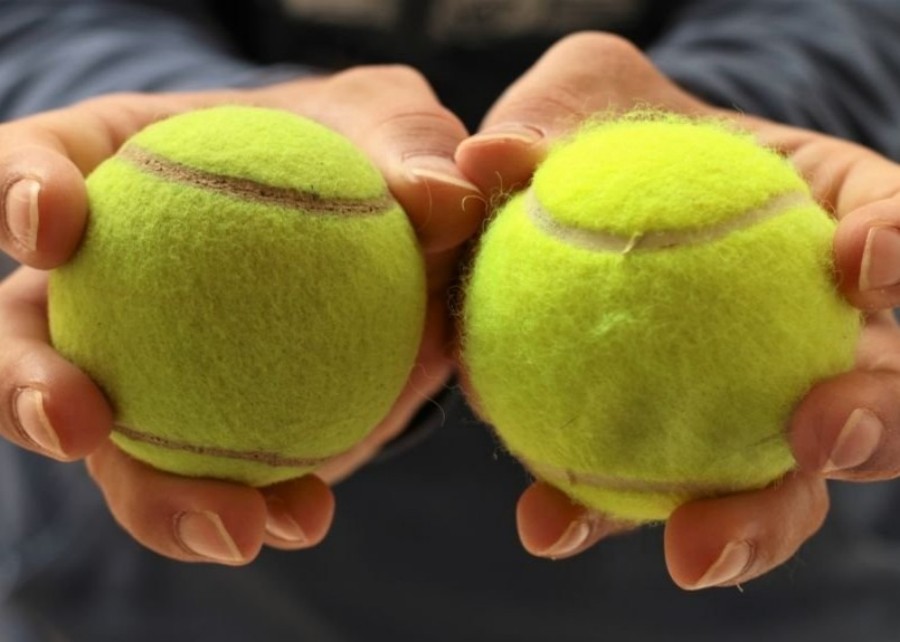
Many people don’t realize the fundamental differences between a sports-grade tennis ball and one made specifically for dogs. A shocking number of pet owners, maybe even 7 out of 10, reach for a regular tennis ball as their dog’s first toy. The problem is, these balls are designed for racquets, not teeth. The fuzzy yellow felt, a mix of wool and nylon, is highly abrasive. Over time, it can act like sandpaper, wearing down a dog’s dental enamel in a process called "blunting." Furthermore, the rubber core can break apart into chunks, creating a serious choking or blockage hazard. As manufacturers, we also know what can go into the rubber and dyes to keep costs down for sports equipment. These are not standards we would ever apply to a pet toy.
| Feature | Regular Tennis Ball | Safe Dog Tennis Ball |
|---|---|---|
| Felt Material | Abrasive Nylon/Wool | Non-abrasive, pet-safe natural felt |
| Rubber Core | Can break into chunks | Durable, tear-resistant virgin rubber |
| Chemicals | Potential for lead in dyes | Certified non-toxic dyes and materials |
| Purpose | Designed for sport | Designed for chewing and safe play |
What Materials Should Be Avoided in Dog Tennis Balls?
When you’re sourcing products, choosing a toy seems easy. But many low-cost toys use harmful materials. Knowing what to avoid is the first step to protecting pets and building a trustworthy brand.
You should absolutely avoid dog tennis balls made with unknown recycled rubber, PVC, and dyes containing lead or other heavy metals. Also, be careful with low-quality glues that can release toxic fumes. Always choose natural, virgin rubber and certified pet-safe dyes.
From our perspective as a manufacturer, supply chain management is where safety begins. It’s not just about the final product, but about every single component that goes into it. We have a strict "do not use" list for all our brand partners. For example, some factories use cheap recycled rubber to cut costs, but you never know what contaminants are in that mix. PVC is another red flag due to potentially harmful plasticizers. And while certain dyes create vibrant colors for less money, they might contain lead.
This is why our process is so rigorous. We don’t just find a supplier; we qualify them. We require material safety data sheets for every batch of rubber and dye. This might make our products slightly more expensive than some competitors, but it’s an investment in safety and brand reputation. For brand owners, this is a powerful selling point. You can confidently tell your customers that your products are free from these harmful substances, building a level of trust that cheap alternatives can’t match.
How to Choose the Right Size Tennis Ball for Different Dog Breeds?
You’ve sourced a ball made from safe materials. That’s great, but one size does not fit all. The wrong size can turn a fun game into a choking emergency, a critical risk many brands overlook.
A dog tennis ball must be large enough that it cannot be swallowed but small enough to be carried comfortably. A good guideline is that the ball should not fit entirely behind the dog’s front canine teeth. Supervise all play.

This isn’t just a consumer tip; it’s a crucial aspect of product line planning for any serious pet brand. Based on our market data and manufacturing experience, we’ve developed a clear sizing system that we use to advise our clients. For one of our clients, Garrett, we developed a 2.5-inch ball for his brand extension into pet toys, and it quickly became his bestseller, increasing sales by 40%. Another partner, a German retail chain owner named Judy, confirmed that the 2.5-inch ball accounts for 65% of her tennis ball sales. This data shows a clear market need. Offering a strategic range of sizes allows a brand to cater to nearly the entire market and demonstrates a deeper understanding of pet safety.
| Dog Size (Weight) | Recommended Ball Diameter | Common Breeds |
|---|---|---|
| Small (2-10 kg) | 1.5 – 2 inches | Chihuahua, Yorkie, Dachshund |
| Medium (10-25 kg) | 2.5 inches (Standard) | Beagle, Cocker Spaniel, Bulldog |
| Large (25+ kg) | 3 – 3.5 inches | Labrador, German Shepherd, Golden Retriever |
We help our partners create a complete product line, often suggesting these three core sizes to cover over 90% of the dog population.
What’s the Ideal Bounce Height for Dog Tennis Balls?
A ball’s bounce might seem like a small detail. But it directly impacts a dog’s play experience. The wrong bounce can lead to boredom or frustration, which customers will associate with your brand.
The ideal bounce for a dog tennis ball is between 30 to 40 cm when dropped from a height of one meter. This creates enough excitement to engage the dog without being so unpredictable that they become frustrated or lose interest.
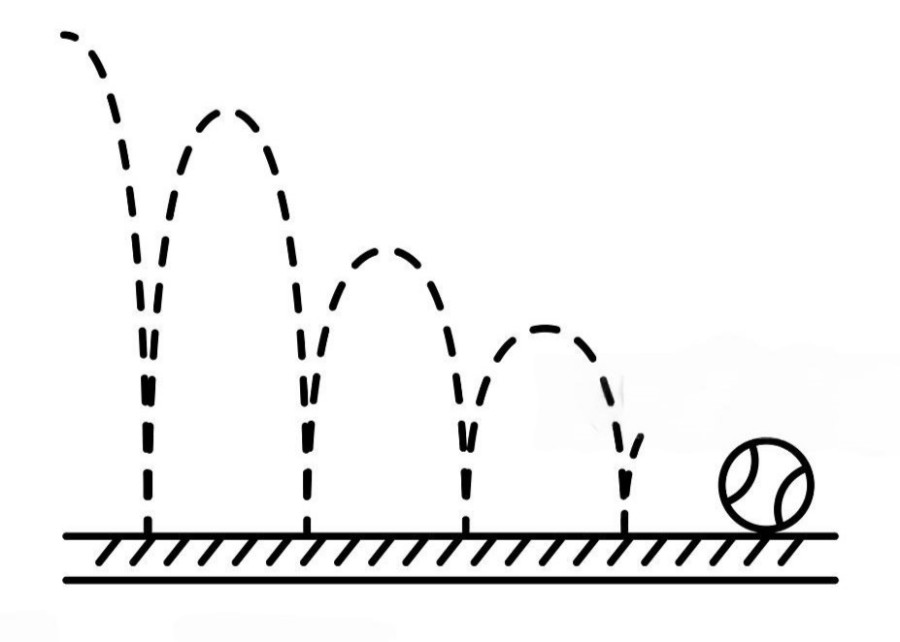
We’ve moved beyond simple manufacturing into product engineering, and bounce is a key parameter we can control. In our lab, we perform drop tests to ensure every batch meets the client’s specifications. Why does this matter? A ball that bounces too high can be hard for a dog to track, leading to frustration. A ball with almost no bounce is just boring and doesn’t encourage active play. The sweet spot, around 30-40 cm, keeps a dog engaged for a good 15-20 minutes.
This technical detail can be turned into a powerful marketing tool for brand owners. We can help you engineer products for different market segments. A high-bounce ball can be marketed as an "Athletic Series" for active dogs. A medium, standard bounce is perfect for a "Classic Play" line. You could even develop a low-bounce ball for an "Indoor Safe" collection. By adjusting the rubber composition, we can help you tailor your product to a specific brand promise and customer need.
What Are the Most Common Tennis Ball Safety Complaints from Pet Owners?
Negative reviews can damage a brand’s reputation overnight. Many common complaints about dog tennis balls are completely preventable. Knowing these issues is key to creating a product that customers trust and recommend.
The most common complaints we’ve tracked are balls breaking apart and posing a choking risk (45%), dyes bleeding onto fur (25%), strong chemical smells (20%), and improper sizing leading to safety scares (10%).
We see these complaints as an engineering roadmap. Our goal is to solve these problems at the source so our brand partners never have to deal with them. For example, when Judy, the German retail owner, first started, she sourced from multiple factories and constantly dealt with these issues. Since consolidating her sourcing with us, her product complaint rate has fallen by over 90%. This is because we have systematically addressed each common failure point.
Here’s how we tackle the top issues:
- Problem: Ball breaking. Our solution is a stronger thermal bonding process for the felt and using high-tensile strength virgin rubber that resists tearing, unlike weak, recycled rubber.
- Problem: Color bleeding. We only use certified pet-safe, non-toxic dyes that are chemically bonded to the felt fibers, ensuring they stay put even with heavy drool and chewing.
- Problem: Chemical smell. This often comes from cheap vulcanizing agents. Our materials are tested for volatile organic compounds (VOCs), and we use a cleaner manufacturing process to eliminate odors.
Choosing us as a partner means you are choosing a solution that has already been tested and proven in the market.
What Custom Branding Options Are Available for Private Label Dog Tennis Balls?
A fantastic, safe product is only half the story. To succeed, your brand must be memorable and stand out. A generic, unbranded product gets lost in a crowded market, failing to build loyalty.
Full custom branding options are available, including high-definition logo printing, premium logo embroidery, custom Pantone color matching for the felt, and completely bespoke packaging solutions. This creates a powerful, unified brand experience for your customers.
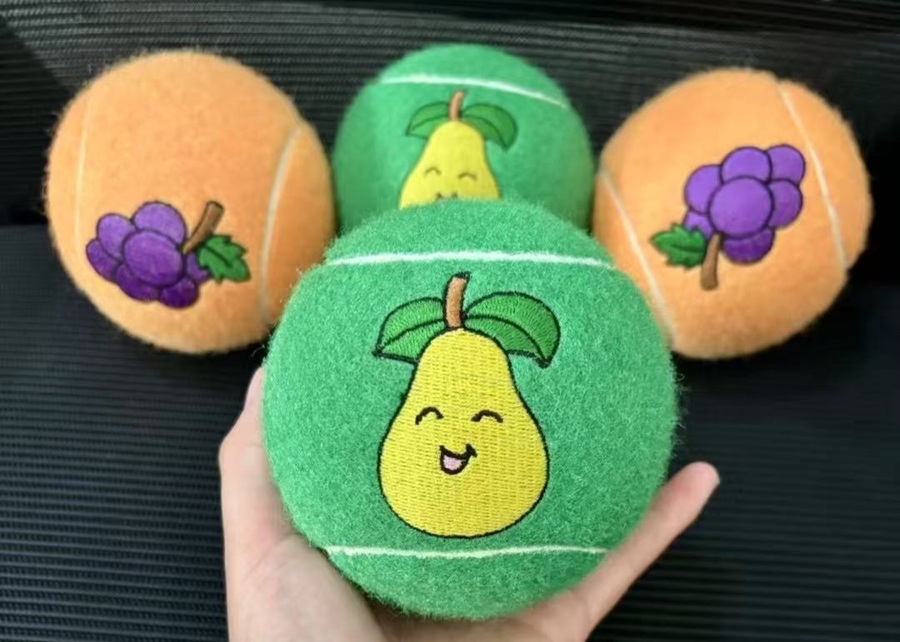
We position ourselves as more than just a manufacturer; we are a brand development partner. We understand that your brand’s identity is its most valuable asset. That’s why we offer a comprehensive suite of customization services to bring your vision to life. For Garrett’s pickleball-themed dog toys, we didn’t just make a ball; we replicated the look of his best-selling paddle, creating a unique product that extended his brand’s reach.
Here are the key options we provide to help your brand shine:
- Logo Application: We can do crisp, multi-color printing for detailed logos or elegant embroidery for a more premium, durable feel.
- Color Customization: We can match the felt to your brand’s exact Pantone color, creating instant recognition on the shelf.
- Packaging Design: We go beyond the product itself, helping you design everything from hang-tags and backer cards to multi-pack boxes that tell your brand’s story.
Investing in customization provides a clear return. It allows you to command a premium price, differentiates you from competitors, and builds a lasting brand that customers remember and trust.
Conclusion
A truly safe dog tennis ball isn’t an accident; it’s the result of expert engineering in materials, sizing, and durability. At Preeminent, we’ve spent over a decade perfecting these standards for global brands. Whether you’re a brand owner looking to launch a custom product line or a wholesaler seeking a reliable, high-quality supply, we are your strategic partner. Let us help you turn safety and quality into your brand’s biggest competitive advantage. Contact our team to start building your next best-selling pet toy.

